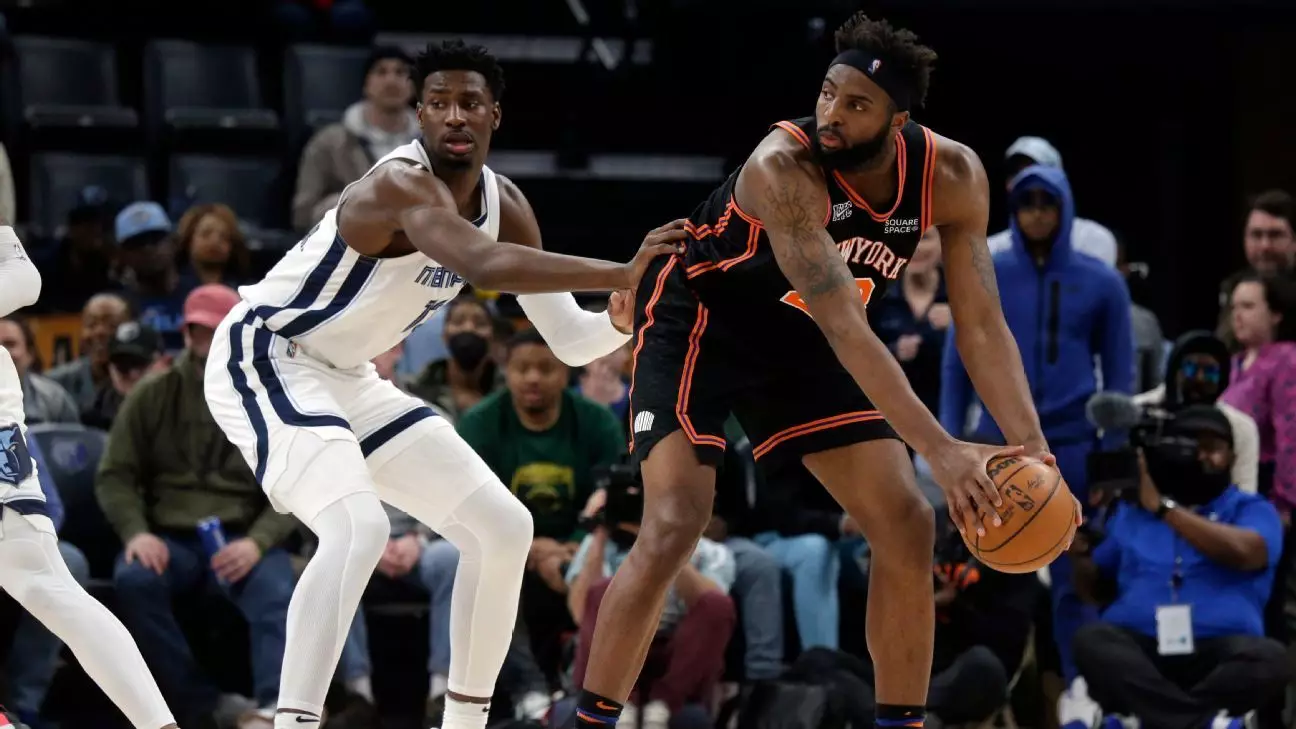The New York Knicks are about to face a challenging start to the regular season as center Mitchell Robinson is sidelined following offseason ankle surgery. The news confirmed by league sources raises significant concerns about the center position’s depth, an area that was already precariously thin. Robinson, who experienced a complicated injury history last season, only managed to feature in 31 games. His ongoing battle with ankle issues resurfaced during the playoff series against the Philadelphia 76ers, where he also missed vital matches in the second round against the Indiana Pacers. The Knicks project a return for Robinson by December or January, contingent on his rehab progress. This timeline undoubtedly casts uncertainty over the team’s interior defense and rebounding capabilities right out of the gate.
The Knicks find themselves in a particularly vulnerable state regarding their center personnel. The team’s former primary starter, Isaiah Hartenstein, has departed for the Oklahoma City Thunder after signing a lucrative three-year, $87 million contract. As of now, the only frontcourt options include the re-signed Precious Achiuwa on a one-year, $6 million deal and Jericho Sims, who is entering his fourth year in the league. This transition creates a pressing need for someone to fill the void left by Robinson’s absence, as his defensive prowess and shot-blocking abilities were critical to the Knicks’ system last season.
Head coach Tom Thibodeau has acknowledged the potential for adapting to this loss by incorporating a small-ball lineup. Notably, he hinted at the possibility of forward Julius Randle stepping in at center. Randle’s significant contract, which includes a player option worth $30.9 million for the 2025-2026 season, underscores his value in the team’s structure. However, a shift away from traditional big men has not typically been Thibodeau’s style. Historical coaching data shows a preference for maintaining size and rim protection, a style that has been consistent throughout his coaching tenures, namely with the Timberwolves and Bulls.
This injury situation comes on the heels of a busy summer for the Knicks, who took decisive actions in the offseason. The franchise notably pulled off a surprising trade for Mikal Bridges from the Brooklyn Nets, marking a significant occurrence as it was the first trade between these two rivals in four decades. Additionally, the organization chose to extend the contracts of both head coach Thibodeau and star guard Jalen Brunson, signaling confidence in their current trajectory. Another cornerstone of the roster, forward OG Anunoby, was retained with a hefty five-year, $212.5 million contract, solidifying the Knicks’ commitment to enhancing their competitiveness.
As the season approaches, the Knicks will need to navigate this injury and roster transition carefully. The depth at center is a legitimate concern, while the expectations and pressures associated with offseason investments are ever-increasing. The outcomes of upcoming games may hinge significantly on how well the franchise adapts to these challenges, sets strategies, and manages player health. The Knicks are entering a crucial period where depth, resilience, and tactical flexibility will be key to maintaining their standing in a highly competitive Eastern Conference.


Leave a Reply